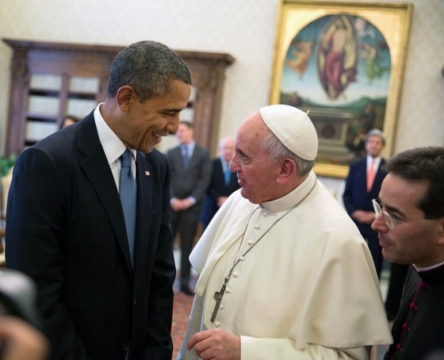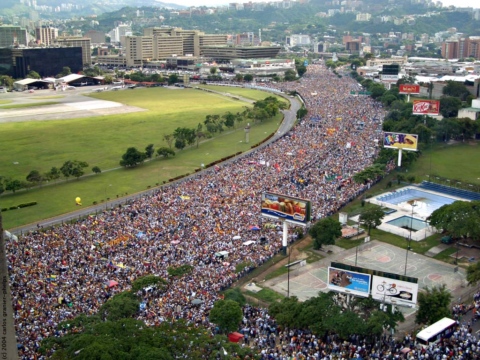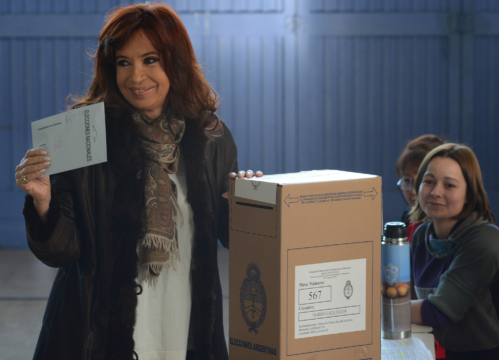
The Pope Comes to Havana & Washington
As he has to date, Pope Francis will remain pragmatic and realistic in pursuing his principles and goals in both the US and Cuba.
This post is also available in: Spanish
Argentina’s ruling Peronist coalition –Frente de Todos– came close to collapsing after suffering a humiliating defeat in the September 12 primary elections, when it obtained only 32 percent of the vote nationally, against 42 percent for the opposition coalition, Juntos por el Cambio. Peronist candidates lost even in their previous stronghold of the Province of Buenos Aires, by far the most populated in the country. If these results are repeated in the November 14 midterms, the government will lose control of both houses of Congress.
The defeat shocked many, including President Alberto Fernández, who expected a narrow but clear victory. After all, the economy is gradually recovering after the lifting of most restrictions, Covid cases are decreasing, and Mauricio Macri (from Juntos por el Cambio) lost power just two years ago amid a serious economic crisis. More importantly, Peronism remains united since 2019, thanks to a coalition forged by vice-president Cristina Fernández de Kirchner, who picked Alberto Fernández to lead the ticket as a concession to moderate Peronists. A long-standing myth was that a united Peronism was electorally invincible. If that was ever true, it no longer is.
The results of the primaries are less surprising given the performance of Fernández’s presidency after two years. Despite a prolonged lockdown that exhausted most Argentines, the country’s Covid-related death rate is among the highest in Latin America. In 2020 the economy collapsed by 10 percent, leading to a sharp rise in poverty and inequality. Vaccination rates are in line with the regional average, but the response to the pandemic was tainted by scandals, including the early distribution of vaccines among government allies and leaked photos of the first lady’s birthday party, which violated a strict national lockdown. Unlike the Frente de Todos, which picked most of its candidates in previous negotiations, the opposition made use of the primary system to define its candidacies throughout the country, mobilizing its voters.
Curiously, Alberto Fernández’s greatest accomplishment has been to keep the coalition united, despite differences between Kirchnerism and other Peronist factions. In any case, the recent defeat broke the delicate balance. Furious about the defeat, which she blamed on the president and his advisors, vice-president Fernández de Kirchner immediately demanded changes to the cabinet and a drastic boost in public spending to regain support among lower classes, her traditional electorate. President Fernández wanted to postpone any changes until after the November midterms.
The vice-president saw Fernández’s inaction as a challenge to her leadership and brought the coalition to a breaking-point: she ordered all ministers who respond to her to resign and publicly pressured the president to “change course.” The country lived days of uncertainty and tension, while its two top leaders bickered over the press and social media instead of meeting to solve the crisis. By the end of the week, a truce seemed to be close, with the negotiation of a new cabinet representing all factions of the weakened coalition.
Any conclusion is premature in such a volatile situation, but it is useful to make a few comments about the current situation, following the primaries and the recent crisis within the Frente de Todos.
First, the experiment created by Cristina Fernández de Kirchner in 2019 -under which she would lead the coalition but not the government- proved electorally successful two years ago, but was a recipe for government paralysis. The president and the vice-president need each other, but trust between them is broken and the authority of the president has been severely weakened. The next two months of electoral campaign will be very uncomfortable for Peronist leaders of various factions, and the next two years in government will be even worse. Disputes about who should be the Peronist candidate for the 2023 presidential elections will surely generate further tensions.
Second, a change of ministers will not resolve profound differences about economic policy even if the incumbent, Martín Guzmán, retains his post. Cristina Fernández de Kirchner demands the end of Guzmán’s (relative) macroeconomic prudence and a vast increase in spending, even if that jeopardizes ongoing negotiations with the International Monetary Fund (IMF). In contrast, president Fernández thinks that a deal with the IMF is a precondition for economic stability, and fears the impact of further spending on inflation. While the two factions might agree to inject more money into the economy before the midterms, their overall positions seem incompatible.
Third, the highly centralized way of exercising power within Peronism (and especially Kirchnerism is having trouble to adapt to a bipartisan political system. The unification of most non-Peronist forces in 2015 –which led to Juntos por el Cambio– challenged Peronists’ control over many provincial and municipal governments. This bipolarity provided equilibrium to Argentina’s political system, but requires new skills from leaders, including the ability to reconcile differences within each coalition.
Fourth, if Argentina’s main coalitions don’t find solutions for social demands –especially the end of an economic crisis that started over a decade ago—there could be a rise of extremist and anti-system forces. This is also a challenge for Juntos por el Cambio, whose failure on economic was overshadowed by the impact of the pandemic. If the opposition wants to win and govern effectively in 2023, it will need to offer more than anti-Kirchnerism and reflect on its own shortcomings when it governed between 2015 and 2019. This task might fall on Mayor of Buenos Aires Horacio Rodríguez Larreta, who is well positioned to lead the opposition in 2023.
It is too early to proclaim winners and losers from the current crisis. After all, in 2017 Macri’s reelection and the end of Cristina Fernández de Kirchner’s political career seemed certain after Juntos por el Cambio won the midterms. Only two years later, Macri was defeated by the Fernández-Fernández de Kirchner ticket. The end of Kirchnerism has been declared many times, usually with more hope than evidence.
What is clear is that Argentina is trapped in an eternal short term, which prolongs the country’s stagnation: GDP per capita is the same now as in the 1970s. The Peronist coalition wants to distribute wealth, but doesn’t know how to generate it. The opposition wants to liberalize the economy, but has no answer to address the obvious social costs that would involve. As many of his predecessors, including Macri, Alberto Fernández’s priority is now merely to survive until the next election. No one knows who will be president in 2023, but it is very likely that by then Argentina will have lost another four years.
As he has to date, Pope Francis will remain pragmatic and realistic in pursuing his principles and goals in both the US and Cuba.
The Venezuelan opposition took the streets to demand a recall referendum, and largely rejected the surprise announcement of a Vatican-backed dialogue.
Mauricio Macri’s failure confirms that there seems to be no politically sustainable way to open up and reform Argentina’s economy. The long-term benefits of liberalizing, improving competitiveness and reducing fiscal spending might be clear in theory, but the immediate social costs of these policies are simply too high for Argentines to bear.

